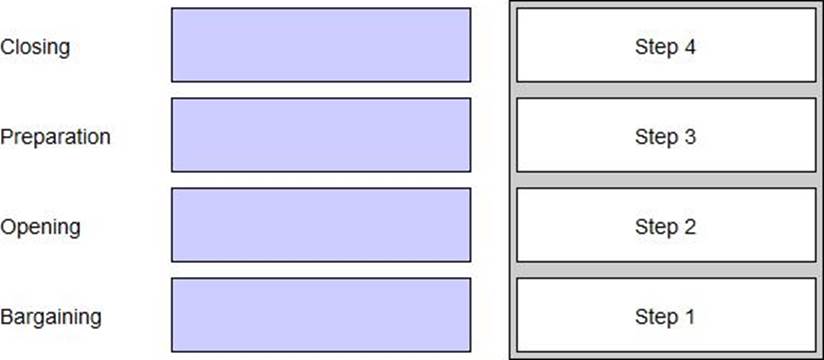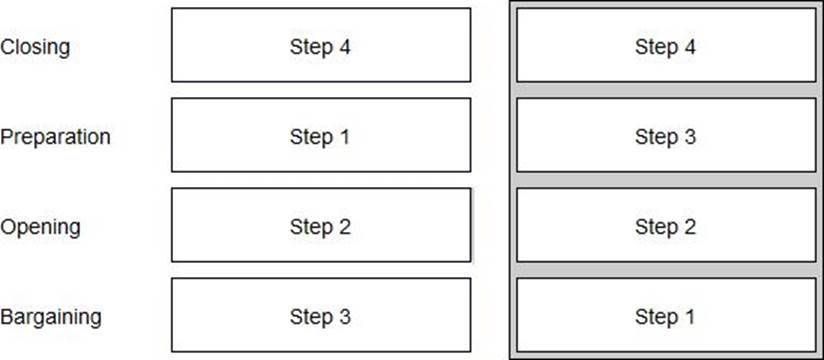CIMA CIMAPRA19-E02-1-ENG E2 Managing Performance (Online) Online Training
CIMA CIMAPRA19-E02-1-ENG Online Training
The questions for CIMAPRA19-E02-1-ENG were last updated at Dec 19,2025.
- Exam Code: CIMAPRA19-E02-1-ENG
- Exam Name: E2 Managing Performance (Online)
- Certification Provider: CIMA
- Latest update: Dec 19,2025
The new Chief Executive of P Company has recently announced that there will be significant changes made to how the company operates. He has stated that his vision for the company cannot be achieved within the existing organisational paradigm.
Although the changes are significant, due to increased competitive pressures, the Chief Executive has commented that changes will need to be made quickly.
Which of the following types of change will occur in P Company?
- A . Evolution
- B . Adaptation
- C . Reconstruction
- D . Revolution
W is the supervisor of the house-keeping team in a large hotel. X, a member of the team, is consistently late to work which means that other team members have to perform extra work. A number of team members have also complained to W about X’s aggressive behaviour. Two months ago W spoke to X informally about these issues and for a short period things improved.
But it is now clear that X is again displaying unacceptable behaviour and upsetting colleagues. W knows further action must now be taken to deal with the situation.
With reference to the disciplinary process, which is the best course of action for W to take?
- A . Write a formal letter to X stating that if the unacceptable behaviour does not stop immediately X will be dismissed without further notice.
- B . Issue a formal verbal warning via a formal interview, with a record of the interview kept on file.
- C . Reduce the paid hours allocated to X as a temporary punishment until the behaviour improves.
- D . Speak to X informally in a private office and ask that X improves their behaviour and apologises to colleagues.
Which of the following best describes the resource based view of strategy?
- A . Carrying out a SWOT analysis to set strategy.
- B . Recognising that competitive advantage stems from some unique asset or competence possessed by the organisation.
- C . Recognising competitive advantage stems from scanning the environment.
- D . Setting a strategy by creating the conditions for new ideas to flourish.
Many analysts and researchers have written about understanding resistance in order to bring about successful and enduring changes in an organisation.
One writer wrote that "An issue is held in balance by the interaction of two opposing sets of forces – those seeking to promote change (driving forces) and those attempting to maintain the status quo (restraining forces)". Select this writer.
- A . Kurt Lewin
- B . John Kotter
- C . Rosabeth Kanter
- D . Peter Drucker
The advantages of embedding the finance function within the business unit include which THREE of the following?
- A . It allows the accountant to provide information specific to a particular business unit with greater efficiency.
- B . It prevents duplication of effort across the organisation.
- C . It enables strong relationships to be developed between the accountant and the rest of the management team within a particular business unit.
- D . It means that the accountant is able to develop best practice that can be of benefit to the whole company.
- E . It allows the accountant to build up detailed local knowledge and understanding of the business unit.
Performance appraisal systems are designed to meet a number of objectives.
Which of the following is a positive objective of such a system?
- A . To motivate individuals by providing an opportunity for feedback and an opportunity for a staff member to discuss any issues.
- B . Managers have a reluctance to give the highest or lowest grades, so end up giving all members of staff an average grading.
- C . Timing of appraisals can lead to problems for management as it tries to schedule a number of performance appraisals within a short time frame.
- D . If the scheme does not have top level buy in, it will be unlikely to succeed and may become a box ticking exercise.
X is a Project Manager who works in a matrix organisational structure with an authoritarian leadership style. Team members are seconded on a part-time basis to teams led by X, who will then contribute to their individual performance appraisals at the end of each year.
X requires all team members to follow exactly what he tells them without question because he has the authority to provide negative feedback in their performance appraisals. According to the French and Raven model, select the type of power that X is using in these circumstances.
- A . Coercive
- B . Reward
- C . Referent
- D . Feedback
A company, which is heavily reliant on its IT systems, experiences a critical problem affecting its just-in-time processes. The manager recognises an immediate need to change and upgrade systems, which he knows will meet resistance by some long serving staff.
Which of the following would be the most appropriate method for dealing with the resistance at this time?
- A . Coercion
- B . Facilitation
- C . Participation
- D . Negotiation
Examine the network diagram shown and identify ALL of the statements below that are true.

- A . Task C is a predecessor of E
- B . Task G may begin when either Task B or Task F have finished
- C . When Task A is complete, three tasks may begin
- D . Task D is a successor to F
DRAG DROP
Negotiation is an important skill for managers and their relationships with subordinates, stakeholders and suppliers. The negotiation process can be divided into four disctinct stages.
Place the following stages in the correct order:

Latest CIMAPRA19-E02-1-ENG Dumps Valid Version with 210 Q&As
Latest And Valid Q&A | Instant Download | Once Fail, Full Refund


